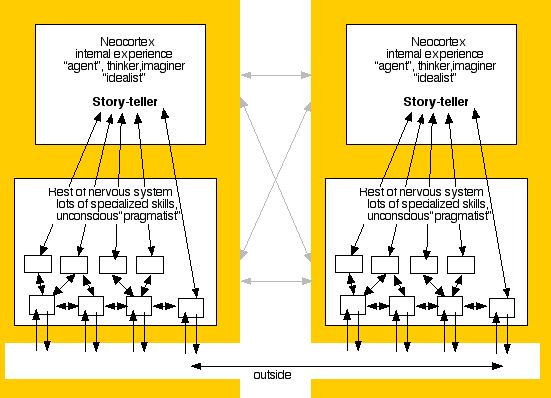Remote Ready Biology Learning Activities has 50 remote-ready activities, which work for either your classroom or remote teaching.
Serendip is an independent site partnering with faculty at multiple colleges and universities around the world. Happy exploring!
| Phase One: The brain/student is regarded as a "tabula rasa" or blank slate, on which experiences/teaching act to "sculpt" a functional brain/educated person. The educational need is for clear, organized, and appropriate "input". | |
|
Phase Two: It is recognized that the brain/student has, when they enter any given classroom, substantial pre-existing internal organization. Brains/students are different from one another internally, with distinctive abilities, expectations, and perspectives. The educational need is to create different forms of "clear, organized, and appropriate input", as needed for each student. | |
|
Phase Three: It is recognized that the brain/student has autonomous exploratory inclinations/capabilities. Outputs, along with expectations of resulting input, are internally generated; learning occurs as a result of comparisons between the expected and the actually experienced inputs. The educational need is to create environments within which brains/students can effectively and productively explore, with learning as the result. |
Paul Grobstein, December, 2000
Paul Grobstein, added March, 2007

|
Phase Four:
It is recognized that the brain/student (and teacher) function simultaneously and interdependently in two modes. One is an unconscious explorer/learner/creator who interacts directly with the world. The second is a conscious explorer/learner/creator who experiences/creates stories about/reflects on the information it gets from the unconscious and in turn both influences the unconscious and acts on the world through it. The educational need is to faciliate both unconscious and conscious processing and, most particularly, the ability to productively exchange information between the two systems. This in turn depends strongly on effective social interactions, not only between teachers and students but among students and between students and teachers and the world at large. To achieve this, classrooms need to be organized not only to facilitate unconscious learning but also to encourage story telling as well as the continuing process of using stories to generate new observations and observations to generate new stories. Teachers need to model the entire set of activities, to create an environment of open-ended, transactional inquiry. Education is as much about helping people enhance their ability to make their own sense of the world as it is about conveying existing understandings. In fact, the latter should be regarded as relevant precisely to the extent it serves the purpose of maximizing the capability of all individuals to continually create and revise their own unique understandings. |